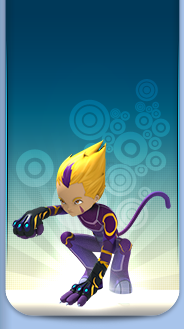
|
 |
Timeline
| | | Hello dear friend!
This is the file on the Code Lyoko timeline. Warning! This is where we go into the timeline of events in the series (days, months, years the episodes take place in, etc...). For a contextual summary of the episodes in the series, check out the "History" section that details all our heroes' adventures in fighting XANA.
So why only a file on "The series timeline" and not a full section? Sections are only based on concrete, consistent elements that are explained and mentioned in the cartoon.
The Code Lyoko timeline is very tenuous. A handful of episodes give us an idea of when they take place in the heroes' world (episode 32 "Saint Valentine's Day" takes place on the eponymous day; episode 53 "Straight to Heart" is on the first day back at school, etc...). But those are just clues, and they're often extremely vague. Establishing a precise, rigorous timeline requires a lot of work and a lot of assumptions.
None of that is worth making an entire section for, so here's a quick file on the series timeline. Have a nice read!
[Introduction] [The different timelines] | | |
|  | Why isn't there an exact timeline?
Yep, here we go.
We're jumping right in! Yes, you're reading a file on the Code Lyoko timeline. And yet... No, none of the timelines you'll find on this page are perfect, official or 100% reliable. Despite this distressing observation, we do have a number of pertinent elements we'll be listing here.
But don't close the tab just yet - lower down the page, you'll see that with a little flexibility and perseverence, we can come up with something suitable and usable (for fanfiction writers especially).
1) Writing and directing restraints
Let's start at the beginning, with the dullest observation.
Sticking to a strict timeline was never one of the main objectives of the creators or distributors. It's a little sad but true: Code Lyoko is a cartoon meant for a child audience with little concern for a coherent timeline.
From the start, the writers and writing director didn't really worry about this. Not to mention the schedule for writing episodes makes things difficult, and doesn't leave much time for laying out a precise timeline. And the task becomes even harder when we know that each writer only wrote a handful of episodes, and some writers only worked on Code Lyoko for a single season. Imagine the amount of information a writer would need to study up on if they only joined the team during season 4. Their first priority would be writing an episode that gels with the rest of the series, not trying to adhere to a timeline nobody was asking them to stick to.
All that to say, considering the process of making an episode, it's logical that Code Lyoko wouldn't have an exact timeline like a big-budget American-style production might have.
2) Broadcast constraints... The episode order!
Second key element.
Before Code Lyoko became serialised (thanks to Miss Decroisette and Jérôme Mouscadet for pushing for that), Code Lyoko was an episodic series. In other words, the episodes could be viewed in any order.
That's the case for all of season 1, aside from the final two episodes. It's also the case for 18 out of the 26 episodes in season 2. It's only from season 3 onward that the episode order wasn't as easily changeable and the episodes need to be seen in a certain order.
So we need to understand that at the start, it was expected that the writers wouldn't be too exact with the dates in the episodes. As a prime example, did you know that on first broadcast, the episodes of season 2 were aired in a different order in France and the US?
Episodes 38 "Temptation" and 39 "A Bad Turn" were aired in the second half of the season, and episode 49 "Franz Hopper" was aired a couple of episodes early. This put a gap between episode 49 where XANA sends a clone to pose as Franz Hopper, and episode 50 "Contact" where Hopper contacts the Lyoko Warriors.
This example shows that if the series broadcasters were ok with changing the order of plot-significant episodes, then the timeline of episodes that aren't plot-significant didn't really matter to them.
3) Narrative breaks
Another element that makes this task a little difficult is narrative breaks.
Season 1 left the vague impression that each XANA attack had its own episode. As such, we felt we knew about all the adventures our heroes had been on in their fight against the demonic AI, excluding the ones that predate Teddygozilla.
Then along came the episode Routine. The viewer learns that XANA has attacked several times off-screen, between episodes. The episode even opens on a first attack that the heroes are countering on Lyoko, with no idea of what might be going on on Earth. So the series has minor timeskips between each episode, which complicates our task somewhat.
Because although some breaks are clearly identified (like the "holes" between each season), others, not so much.
4) Series timelessness
Another element that doesn't help us in establishing a timeline is that the series setting is timeless.
Timelessness is common in most cartoons: time doesn't really change at Kadic.
There's no wind, rain or snow unless XANA has something to say about it. Every day is just as bright as the next, the sun doesn't set at different times of day depending on the season. The trees never lose their leaves. The sakura tree outside the Ishiyama house flowers all year round!
This is reflected in our heroes. We've all laughed and said, the heroes never change. They're always wearing the same clothes. No changing into tank tops in episode 52 "The Key" at the end of the school year (summer), and Aelita happily wanders through the Kadic park in a simple dress in episode 82 "Distant Memory" which marks the start of the Christmas holidays (winter).
Plenty of other things that will make the timeline more complex.
The reason for that? Production costs for one, of course (fewer outfits and no weather = less work for the production team). But that's not all.
The fact that Code Lyoko aired worldwide had an impact on the direction choices. The series takes place in France and the series doesn't hide this in certain episodes (episodes 09 "Satellite" and 84 "Guided Missile"). But in terms of a timeline, you can't really tell so easily. For example, in episode 53 "Straight to Heart," since the first day back at school is at the centre of the episode, why is it never mentioned that it takes place in September?
Well because if someone was watching the series in Japan, they'd expect school to start in April. And you need to allow them to assume that or it'll break their immersion.
Also, why not change to winter clothing from episodes 45 to 82, which as we know, takes place in December?
Well, because for countries in the Southern Hemisphere, it's summer in December. Christmas happens when it's beach weather!
5) The creators...make mistakes
Well, why can't our timeline be something that works with the given contents of the series? Because the creators make mistakes. They're also human, just like us. We can name 3 types of error.
- The big loser error!
This error often jumps right out at you: the most well-known and "officially" recognised by fans is the narration at the start of the prequel "XANA Awakens" which takes place a year before season 1.
"Diary of Jeremy Belpois, Kadic Academy 8th grade student, October 9th."
Obviously, since Jeremy is in 8th grade in season 1, he should be in 7th grade in the prequel.
- Date errors
There can be a number of these errors, stemming from a lack of attention to detail on the production side. Second textbook case: the prequel combined with episode 14 "The Trap."
In episode 14, the heroes realise it's been a year since they reactivated the Supercomputer. The prequel tells us the Supercomputer was reactivated a few weeks before the 9th of October. Logically, we can assume episode 14 also takes place on or before the 9th of October.
However, episode 03 "Holiday in the Fog," which takes place 11 episodes earlier, references a school holiday...but there are no school holidays between the start of the school year and the 9th of October.
As such, it's impossible to establish a coherent timeline between these 3 episodes.
Another recurring error for the eagle-eyed among you: on the co-ordinates for the return to the past, it always says 29/04/2003, no matter the season.
- Fleeting errors
Production isn't immune to making small errors. Officially, season 1 takes place during the first half of the school year in 2002. But in episode 19 "Frontier," Odd is playing a GameBoy Advance SP, and this console wasn't released until...2003. But that's only something expert eyes could spot.
Sometimes an issue even arises within its own episode. In Franz Hopper's diary (episode 52), Franz Hopper's beard grows continuously...but his daily return trips to the past should have kept his beard at the same length from day to day.
Finlly, the paradox is that the creators (notably the lead writers and directors) sinned by naïveté. In other words, they meant well. Too well.
There are numerous timeless series. South Park and The Simpsons are two well-known examples. In those two series, the characters at the centre of the series have stayed the same age for...over 10 years and counting! In South Park, Stan and Cartman's group move up a grade in one season... But that's it. The kids meet different Presidents of the United States; they live through a number of major US historical events spanning more than a decade...and openly mention them all, while never actually ageing. And nobody cares, because the series isn't trying to stick to a consistent timeline.
But in Code Lyoko, it's not just about the lives of the 5 heroes. It's also about how they grow. They change as characters, intellectually, socially (the opposite of Cartman who's the same jerk he's been for over 15 seasons now). Code Lyoko is also the life of Kadic Academy.
So the writers chose to add a few time-relevant clues into the series. Obvious ones such as public holidays (Christmas, Valentine's Day), the school year (holidays...), the heroes' lives (Jeremy, Aelita and Yumi's birthdays) are often major plot points in certain episodes. In order to remind us that the heroes are just like us, they've lived the same lives. As such, Code Lyoko becomes a series with a "common thread," meaning it follows a logical progression in the story...a progression that also wants to make sense chronologically.
A charming intention, but it wasn't executed to the fullest. All these elements only serve as clues, slight traces of the timeline and nothing more. They weren't designed to adhere to a real-world calendar.
In the face of well-intentioned writers, there's a number of fans clamoring for precision and strictness. |  | |
|  |
|  | |
|
 |















